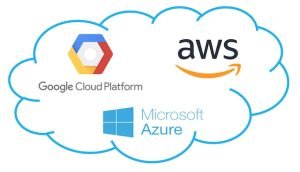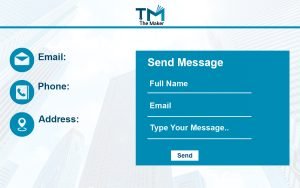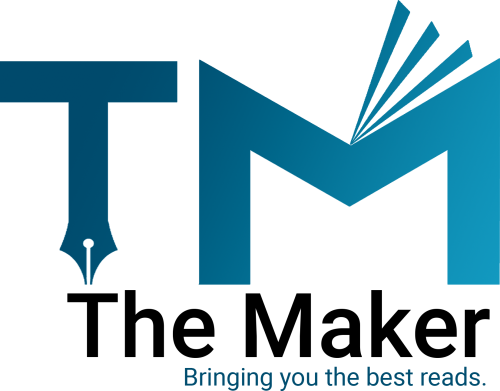Create a High Performance Website

A website’s outperformance is a crucial factor for high user engagement and retention. According to a study, around 40% of people leave a website right away that takes more than 3 seconds to load, and they prefer not to come back again. High website performance means the speed of a web page to download, render and display on a web browser. It is measured in terms of the time taken to load a page. The page load time simply means when you click on the link or type any web address, the amount of time taken by a browser to browse and download a page to show up the entire contents of a web page on the screen.
Besides this, there are some other factors you also need to consider while measuring a website’s performance, such as average web page load time, average domain lookup time, average server connection time, average server response time, average redirection time, and average page download time.
It may sound to you like difficult work, but when you have the right plan, then it is actually not. A good web developer or software architect can build a high-performance website that can help to scale your business. But before that, they must understand well the various above-mentioned factors that really affect the website performance. Usually, a website involves backend databases, web servers and services, APIs or data access services, backend services, or front-end web pages.
In this article, let’s discuss the key points that help to create a high-performance website.
- Hosting/server
The hosting company of your site plays a crucial role in the speed of your site. To understand this, first, let’s see what the hosting server is. A hosting server is a place where all the data of your site is stored. When someone opens your website, all your data from the server will be given to your visitor. Now, if you have a high-performance server, your site will load faster, and your data will reach your customers easily. So it is very important to choose a good hosting server that will load your site faster.
There are four different types of hosting- Cloud hosting, Dedicated hosting, VPS hosting, and Shared hosting. According to your traffic or customer visits, you need to decide which hosting service you want to pay for. Today many people prefer to buy cloud hosting for their websites. Because cloud hosting provides you with service at a cheaper rate, and its multi-server setup allows automatic data backups along with prevention from website downtime.
Currently, there are three big cloud service providers- Google cloud server, Amazon AWS server, and Microsoft Azure. AWS has broad availability zones with the highest public cloud market share. But the other two are also not too behind. However, Google Cloud and Azure are latecomers but running very fast in the market.

On the other hand, if you choose traditional hosting like shared and dedicated hosting, it is essential for you to select the hosting server which is closest to your visitors because it will help to load your site much faster.
Here are a few examples of web hosting service providers you can buy hosting: Hostinger, Bluehost, GreenGeeks, DreamHost, and many more.
- Framework
Choose a good framework to build a website. There are popular web development frameworks such as PHP, ASP.NET, JavaScript, React, Angular and others. Remember that these frameworks may look similar, but these frameworks are designed for specific reasons. Some are for creating data-heavy application, some works better for multiple devices, and some are for mobile phone friendly. That’s why according to your needs and manpower, choose the right framework. Many business owners and software architects make the mistake of choosing because they usually choose based on ‘what they know’ instead of ‘what they require.’ Selecting the wrong framework means setbacks and loss.
- Optimise the website
It is essential to optimise the page for the best user experience. A poorly optimised website makes the load of web pages slow and responds late, which makes you users frustrated, and they abandon it. Here are some ways through which you can optimise your web pages:
- Reduce the image size on your website. If the image file sizes are too large, they will slow down your site’s page load time, but it is necessary to maintain the image quality as much as possible, so do that carefully. Otherwise, it makes your page less attractive.
- Use CDN to speed up your website. Just like your hosting server, CDN can be used to store your data. If you connect your site with CDN, which is available all across the world, it makes your site load faster when your visitors open your website.
- Secure your website with HTTPS. It protects your user against harmful attacks, insecure networks, hackers, and others.
- UX
A well-designed user experience attracts your customer more to your website. Text, graphics, layout, and interactive elements, in combination with essential information, increase your customer’s interest and keeps them loyal to your brand or product.
- Content of the website
The content of the website includes text, images, video, and audio within the web pages. But remember to make it informative to meet your customers’ needs. Now we will be going to focus on website content writing that is especially the information about your products or services to your customers. While writing, make sure to write content from an audience perspective, SEO-rich, clear and concise, and educative that tempts them to buy. Moreover, break up your content text into small paragraphs, subheadings, lists, and informative headings, and also update your content regularly.
- SEO
Whatever your website, SEO is a must. It is about making it rank in the search engine organically to receive more traffic on your site. Here are some SEO factors you need to work on it to make it considered in the Google algorithm, such as best user experience, content optimisation with content quality and keyword placement, etc.
- Mobile optimised and easy to find it

As users prefer to search for a website on their mobile phones, so you need to optimise your website for all devices, not only just desktops. Modify your website mobile-friendly by condensing your menus, making a search icon easy to find, removing popups, offering filters or sorting options, and placing CTA.
- Landing page
A landing page is basically a standalone web page mostly designed with a specific marketing goal. It helps to convert leads for your business. A landing page consists of a clear and single goal, call to action (CTA), social proof, chatbot, etc. Moreover, a landing page not only eliminates distractions but is also easy to navigate as it promotes specific topics, such as product information, to increase product sales.
- Contact us
On the web page, the contact us page/link is essential to engage with visitors and customers as it allows your customer to contact you easily without leaving the page. This is a great way to capture your leads. Your visitors or customers ask questions or leave their feedback through these channels.

Your contact us page must include clear to action, proper contact links such as email address, WhatsApp or telephone number, chat box and social media links, and easy navigation.
Moreover, design your contact page in a way that will be easy for your customers or visitors to find out and get in touch with you.
Also, do not overload the page with too much information, and use clear and readable text.


